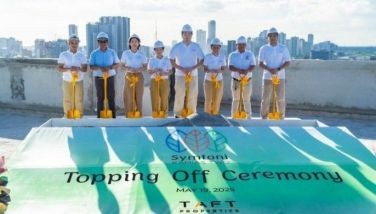Two working days lost to tradition
An old friend called to say that General Douglas MacArthur would have done us a great favor by not insisting on his “I Shall Return” pledge. The most tragic aspect of the campaign to liberate the Philippines was the total destruction of the City of Manila (second only to Warsaw) and the death of so many civilians and non-combatants. Among senior American military officials of the day, General George Marshall, Army chief of staff; Admiral Ernest King, Navy chief; General Henry Arnold, Army Air Corps chief of staff and Admiral Chester Nimitz, commander-in-chief, Pacific Ocean areas, were all in favor of bypassing the Philippines and heading for Formosa (Taiwan) on the way to the Japanese mainland. In less than a year after the Leyte landings, the use of the atom bomb forced Japan to surrender. MacArthur could have then made his return to the Philippines under more auspicious circumstances.
* * *
President Marcos has declared Monday, Oct. 31 a special non-working holiday. On Tuesday Nov. 1, the Christian world celebrates All Saints Day and as far back as I can remember, it was a family tradition to make a special visit to the cemetery on this particular day. In many provinces of the country, the visit to the cemetery is actually on the following day, Nov. 2, which was designated by the Church as All Souls Day. This tradition of visiting the dead dates back to the Spanish period and is part of our Hispanic legacy.
But why do many of us in Metro Manila make such a visit on All Saints Day, the day before the actual feast for the souls? “Visperas” is a Spanish word which means the evening before the day in question, or the last evening before a festival, and in the olden days, the celebrations began a day earlier. So, people began the commemoration of All Souls Days on Nov. 1, continuing to the actual day, Nov. 2. Through the years, different parts of the country have come up with variations of the festival.
The original idea behind All Souls Day was for us, the living, to remember and to pray for the souls of our departed who may be in that halfway house called purgatory, halfway between heaven or hell. Obviously, if a person went straight to heaven, there was no need to pray for him and if he went to hell, no amount of prayers could get him out, or so our religious mentors stressed. Since we could never be sure whether a soul had joined the angels and saints, or was being held in purgatory, or was already consigned to the flames of hell, it was always best to go out and pray for them on this particular occasion.
Today, what is it like to visit the cemeteries in Metro Manila on All Saints Day? First of all, there are the monumental traffic jams on roads leading to the cemeteries and as you get closer, all movements slow down to a snail’s pace. If you are an early bird, parking may not be much of a problem but most often, you’ll be lucky to park within a kilometer of the gravesite being visited. The atmosphere is more like that of a marketplace, with people either eating, sleeping, playing cards or mahjong, or socializing with friends and relatives. For most of the day, the last person on the minds of people is the one you came to visit in the first place.
This year Tropical Storm Paeng makes it even more complicated for those wishing to visit the cemeteries. In the case of Manila, the city government is expecting between 700,000 and 1 million people to flock to the Manila North and South Cemeteries. Both were shut down in the past two years due to the COVID-19 pandemic. For many years now I had advocated and continue to advocate, that we save our visit to the cemetery for a day other than Nov. 1 or 2. It could be a birth or death anniversary, or a day of particular importance for the family, so as to make the visit something special. It is time for a bit more flexibility in honoring the memory of our dearly departed. Nothing is lost by moving your trip to the cemetery for another day, and you will be doing everyone a favor.
The Church can take the lead as it has done in the past, initiating change whenever it was deemed practical. For many, many years, the practice of cremation was prohibited by the Church. In fact, it was considered a mortal sin. This position was discarded and now the Church allows cremation proceedings mainly because of the growing scarcity of land for burial purposes. In the past, Church rituals were conducted in Latin. For sometime now, English and Pilipino are being used in the interest of greater participation by the members.
For many years, the sacred host could only be handled by priests. Today, laymen assist in the distribution of Holy Communion. The Church has drastically reduced the number of days of obligation to only three: New Year’s Day, Christmas and the Feast of the Immaculate Conception. These were measures taken to benefit all by adopting to the realities of the times.
We are in a crisis situation. Fuel and food prices are continuously on the rise, while the peso is headed south. For the daily wage earner who was hit hardest by the lockdowns of the past year, he needs working days, not holidays.
- Latest
- Trending
























